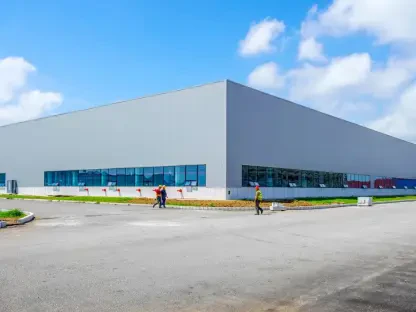Following the much-anticipated post-holiday period, transport prices experienced a marked reduction in January 2025. This trend aligns with historical patterns, and the TEG Road Transport Index revealed significant shifts. The index recorded a decrease of 9.8 points, marking a 7.41% month-on-month reduction. Despite this sharp decrease, transport prices saw a 5.42% year-on-year increase compared to January 2024. Different sectors within the transport industry reacted variably to these changes, reflecting broader economic conditions and consumer behaviors.
Overview of Current Transport Price Changes
Haulage and Courier Sector Trends
In the haulage sector, the impact was notably severe, with a stark 9.16% decrease in January alone. However, the picture remains positive on a yearly basis, as prices reflected a 9.39% annual increase. This mixed outcome in the haulage sector underscores how seasonal adjustments can profoundly affect short-term pricing, even while longer-term trends indicate rising demand and cost pressures. The cyclical nature of the industry requires stakeholders to constantly adapt to these fluctuations.
On the other hand, the courier sector experienced a more moderate decline, with a 5.81% decrease in January. Unlike the haulage sector, the courier industry showed only a modest 1.88% rise year-on-year. This lesser decline suggests a different set of driving factors, with online sales playing a significant role. Senior Logistics Consultant Kirsten Tisdale from Aricia Ltd. pointed out that online furniture sales surged unexpectedly, contributing to mitigating the anticipated decline in courier prices. This indicates how specific market segments can temporarily buffer broader economic downturns.
Economic and Consumer Indicators
Consumer confidence, as measured by the GfK index, dropped by five points, reflecting growing economic uncertainty. This declining confidence can have a cascading effect on various sectors, influencing purchasing decisions and broader market stability. Persistent inflation, remaining at 2.5%, adds to the economic challenges, presenting a complicated scenario for consumers and businesses alike. High inflation typically erodes purchasing power, leading to more cautious spending behaviors.
Amid these challenges, fuel prices saw an increase, with diesel and petrol prices rising by 1.12% and 0.65%, respectively, compared to December. However, when compared to January 2024, these prices were still lower, indicating some respite over a longer timeframe. These fuel price movements are critical as transport costs are heavily influenced by fuel expenses. Any increase in fuel prices directly impacts operational costs for both haulage and courier services, compounding the challenges posed by other economic factors.
Future Implications and Sector Outlook
Forecasted Boom in Parcel Volumes
There is a silver lining amid the economic challenges; forecasts predict a significant boom in parcel volumes. TEG expressed optimism based on Statista’s forecast of a 59% increase in global parcel volumes by 2027. This projected growth represents a substantial opportunity for the transport and logistics sector. Businesses within this industry can potentially leverage this anticipated rise to mitigate current economic pressures. Preparing for this surge will require strategic investments in infrastructure and technology to handle increased demand effectively.
This optimistic forecast provides a counterbalance to the immediate post-holiday price declines, suggesting that the current decreases are temporary adjustments rather than indicators of long-term downturns. Companies that can position themselves strategically now may gain a competitive advantage in the coming years. Despite the immediate cost challenges, the long-term growth prospects look promising, allowing for more aggressive planning and investment strategies.
Existing Challenges and Sector Responses
However, ongoing issues like the Road Haulage Association’s (RHA) class action against truck manufacturers for price-fixing pose significant concerns. With a February 2025 deadline for affected hauliers to participate, this legal action underscores the complexities within the sector. The outcome could have far-reaching implications, potentially influencing future pricing and operational strategies within the haulage industry. The resolution of such legal matters could lead to either financial benefits or additional costs, depending on the outcome.
Compounding these issues are practical challenges such as those highlighted by the Association of Fleet Operators, urging the government to defer MOT tests for large electric vans due to testing slot shortages. This request reflects broader logistical and regulatory hurdles that can affect operational efficiency. Addressing these challenges proactively will be crucial for the sector as it navigates the dual pressures of immediate economic uncertainty and long-term growth potential. Efficient regulatory responses can provide much-needed relief and stability, allowing companies to focus on meeting growing demand.
Navigating Future Opportunities
Economic Adjustments and Industry Strategy
Overall, the TEG Index captured the typical seasonal adjustments, with notable increases in fuel prices and prevailing economic uncertainties as the main challenges. However, the promising forecasted growth in parcel volumes and potential interest rate cuts may offer some relief for the logistics sector in the coming months. As businesses in the transport industry prepare for these potential shifts, strategic planning and adaptation will be key in capitalizing on future opportunities.
Looking ahead, the logistics sector must prioritize flexibility and resilience in its strategies. By anticipating market shifts and leveraging technology advancements, companies can better navigate the complexities of economic cycles. Strategic investments in capacity building and infrastructure development will be vital in positioning for future growth. Collaborative efforts within the industry, alongside proactive regulatory engagement, can also help mitigate immediate challenges while paving the way for sustained success.
Building Long-Term Resilience
Following the much-anticipated post-holiday period, transport prices saw a marked reduction in January 2025. This pattern aligns with historical trends, and the TEG Road Transport Index revealed significant shifts in the market. Notably, the index recorded a decrease of 9.8 points, signifying a 7.41% month-on-month decline. However, despite this sharp reduction, when compared to January 2024, transport prices actually experienced a 5.42% year-on-year increase. Various sectors within the transport industry reacted differently to these changes, reflecting broader economic conditions as well as evolving consumer behaviors. These variances underscore the complexity of market dynamics and how external factors, such as seasonal trends and economic health, can influence pricing and industry responses. By examining these patterns, stakeholders can gain a better understanding of the transport sector’s fluctuations and anticipate future movements.








